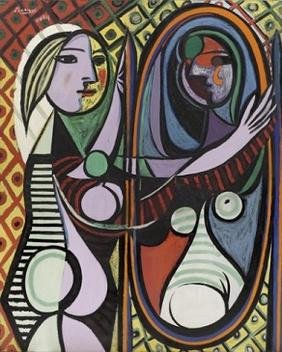What Is Modernity? An Inclusive Perspective
This article is the second in a series of responses to Episode 2.2 of the Genealogies of Modernity podcast.
To respond to the question “What Is Modernity,” I will use three categories that I will develop based on the reactions of participants in Episode 2.2 of the Genealogies of Modernity podcast. It is important to underscore that my response is rooted in a set of minority identities pertaining to religion, culture, race, gender, and cosmopolitanism. By this I mean a Muslim, an African and scholar of African literature and culture, and a Black woman who has traveled quite a bit around the world and calls herself modern yet is deeply rooted in these aforementioned minority identifications.
Past and present
Being modern means to be able to live together with the past and the present. This seems to be what most of the interviewees were yearning after even though it tends to be complex to express it clearly. Michael Puett in his interview with Ryan McDermott nails it:
We are living in a world created by things that existed in the past. The world is absolutely haunted. To give obvious example, is America haunted by its horrible racist past. Of course, it is horribly, and if one doesn't accept that and then work with it, you face the grave danger, which in America we faced repeatedly of simply ignoring it and allowing it to continue.
This statement in itself says everything. It makes me think of historiography. If we establish a parallel between modernity and historiography, modernity needs to go back to the past in order to integrate parts of civilizations that were left behind and integrate them to really discover the true meaning of modernity. As the philosopher said, we all need to stand on shoulders of giants. To build a fruitful modernity we need to look back into the past and integrate the areas that were left behind or not given their due consideration in order to advance peacefully. The past thus interconnects itself with the present to produce modern narratives through a progressive and evolutionary continuity.
Continuity and evolution
The notion of continuity itself implies that there was something that started before and that needs to be continued. What happened in the past is protruding into the present in the very sense of evolution. Isn’t that the essence of genealogy? Can we say that to focus on genealogy is a way to be modern? To be able to trace continuity, progress, or evolution, one has to look into the past and build on that. Sceptics may ask what the limits are for this constant re-evaluation of modernity. My answer is that in an evolving world, we will always have something to add to the concept of modernity. So let us not limit ourselves. Another question that arises is who or what are the ancestors we are tracing the genealogy from? And my answer to that is anyone and anything. This sense of evolution with an openness to the past brings us to the notions of humility and inclusivity.
Humility and inclusivity
Humility is key to understanding modernity. It takes humility to be truly modern. Modernity, for me, means to have a comprehensive view of what is at stake in different parts of the globe and in different fields. Humility allows us to receive people’s ideas fairly but also to share one’s ideas without a complex of inferiority or superiority. This allows a mending of different generations where each brings a positive contribution to a modern society that gathers both. This is called inclusivity.
Pablo Picasso, Jeune fille devant un miroir, 1932
Inclusivity is a commitment not to leave out any civilization, continent, practice, or religion, no matter how ancient or new it seems to be. Having a consciousness of all these different aspects and choosing one’s niche while respecting other people’s decisions and choices become key to a robust modernity. In this sense, being modern entails the ability to have a productive conversation about any topic no matter how difficult it can be. It also entails that we are ready to learn more about a different civilization, a different subject that our research does not necessarily cover. That is why Dominic in the podcast episode considers modernity a “search for identity in itself,” Meredith understands it as the ability “to be faced with the consequences of past generations choices,” and an anonymous student envisions it as “a clash of cultures exposure to different world view.” I want to say that all their perceptions are valid and fall into this analysis of humility and inclusivity.
For all these considerations, the concept of modernity should not be limited to any particular academic field. Rather, it should be applied to any academic or practical field as we strive to be inclusive and pay attention to different sensibilities of different continents, races, genders, and so on. This indeed is not an easy task. But the work has to start somewhere, and communities like the Genealogies of Modernity Project are a good place where we can start with fruitful exchanges moving forward.
Rokhaya Aballa Dieng holds a Ph.D. in Comparative Literature (French, English, Anthropology) from the University of South Carolina. Her interest focuses on migration from African literatures, films, cultures and diaspora. Dieng is currently a Visiting Assistant Professor of French at Kenyon College.

